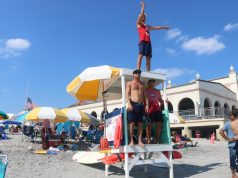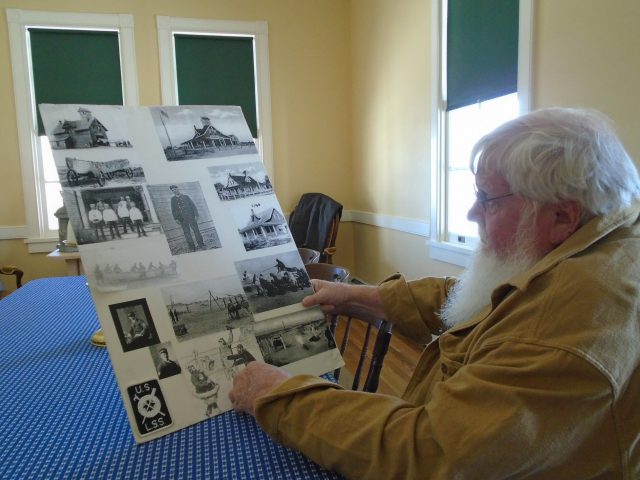
By Maddy Vitale
Historian John Loeper lost count of the hours of hard work that went into recreating the scene of the historic U.S. Life-Saving Station at Fourth Street and Atlantic Avenue in Ocean City.
But what he does know is museum-goers who will get the chance to tour the building by Memorial Day weekend and feel like they stepped back in time.
“Everything in it is period-perfect,” Loeper, chairman of U.S. Life-Saving Station 30, a nonprofit organization said. “We want people to walk through here and feel like they are living in another time.”
Over the past couple of months Loeper and the other volunteers, have dedicated six years to bringing the historic building back and furnished it the way it looked when it was in existence from 1872-1915. The building is city-owned, but the museum will be run by the volunteers.
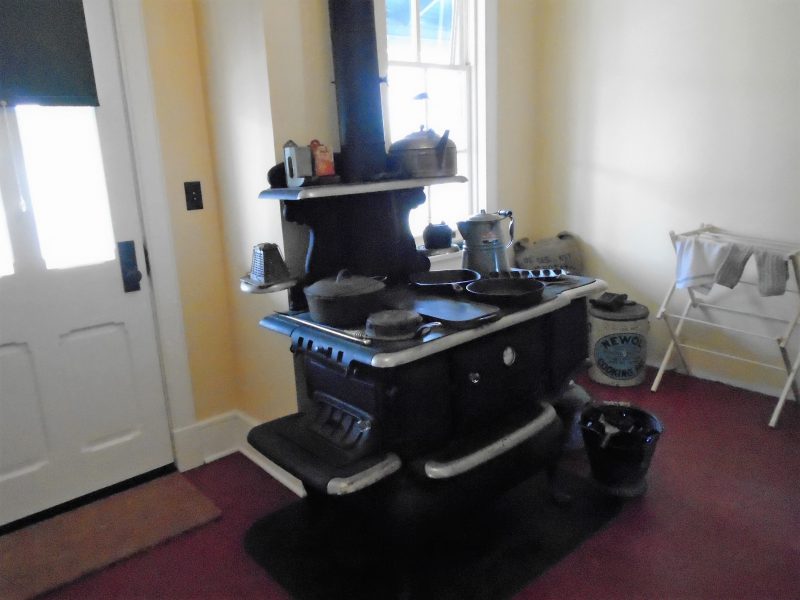
From donations of antique nautical items, to purchases of circa 1915 chairs, coal-burning stove, porcelain sink from 1915, and cast-iron pots and pans, create the scene of long ago.
Although many of the items are antiques, there are some reproductions, including a library box. The boxes were the first libraries. Books were put in these containers for surf men and the keeper to read and the box would transfer between stations. The first one was used in the 1880, Loeper said.
The scent of kerosene still lingers on the lanterns that lit the way for surf men to make their ship wreck rescues, an oak desk in the keeper’s room, holds an ink well and has many slots for wreck reports, accounting, activity reports and other important paperwork.
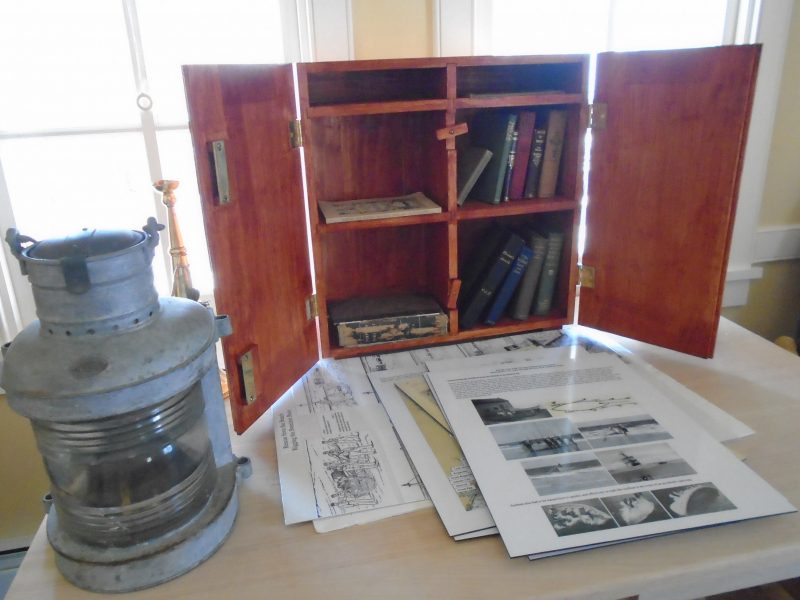
Loeper said the museum will be an enjoyable and educational experience for children to show them what it was like a century ago at a Life-Saving Station.
“We have to do it, so the history isn’t lost forever,” he remarked.
There were 62 men who worked at the Life-Saving Station. Seven surf men as they were called, worked and lived at the station. It was tough work and they had to go out to catch or hunt for food, Loeper said.
On average, the men made a rescue a month, Loeper said while seated in the dining quarters on a circa 1905 chair, one of 40 donated to the museum.
The most important room was one filled with life-saving equipment, which includes a 26-foot surfboat on display and a 1,000-pound beach cart, Loeper, a ship builder, made for the museum. The cart held everything the surf men would need to take to a rescue. Tin lanterns, rope and other items filled the wagon.
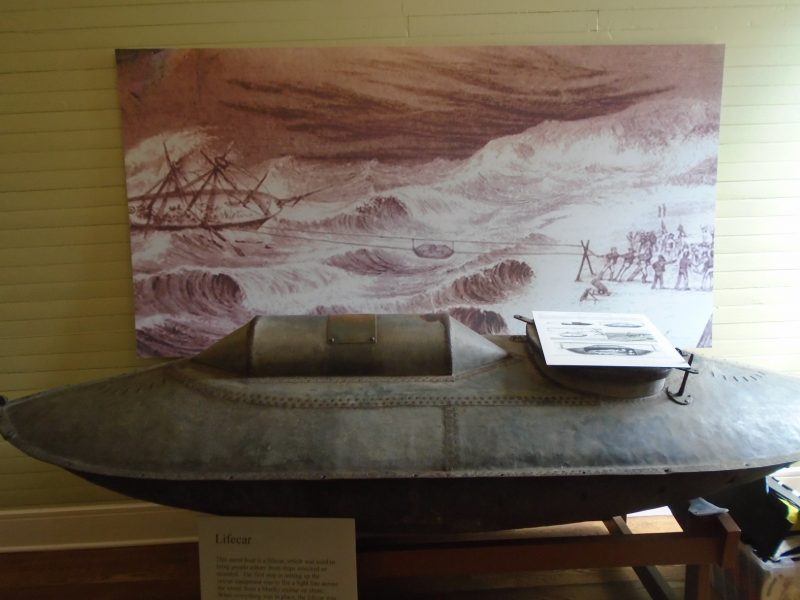
“I don’t know how they did it,” Loeper said of how a small crew of men, sometimes just two men, would heave the heavy cart onto the beach in the night and save lives.
The U.S. Life-Saving Service, a government agency, was formed in 1848 to help rescue shipwrecked passengers and crew members prior to the U.S. Coast Guard, created in 1915.
And these men didn’t just handle water rescues.
“If you were on the island, you could go to the Life-Saving Station and they would give you clothes, feed you and give you basic medical help,” Loeper explained.
Loeper’s enthusiasm for the museum comes from a love of history, but also the knowledge that he and the volunteers, with the support of the city, will soon be able to bring back the important piece of history for people of all generations to enjoy.
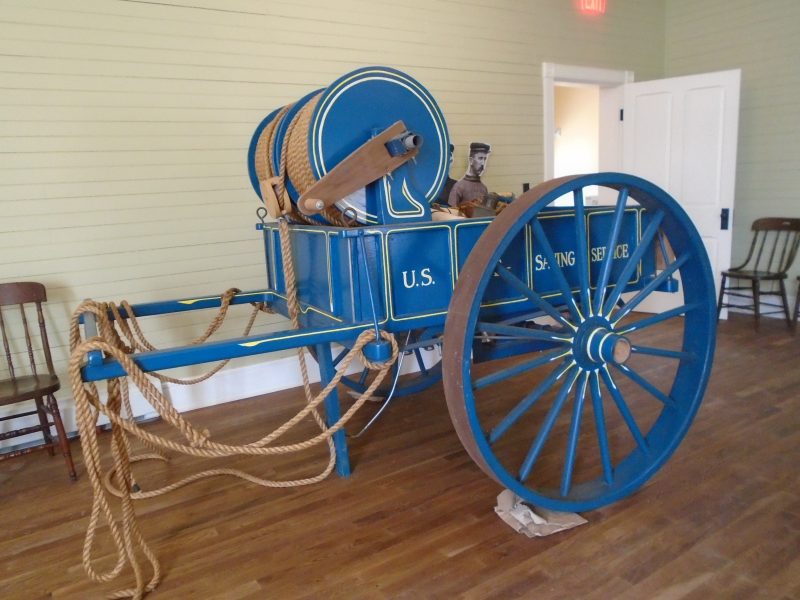
And unlike most museums, where there is a no-touch rule, children and adults can touch all the items, pick up the lanterns, sit at the keeper’s desk and just take in the history.
Children will even get copies of wreck reports that they could fill out.
“I want kids to come here and understand what it was like. Everything in here can be touched,” Loeper said. “You can sit with six of your friends and have lunch at the table.”
Today there are just three other Life-Saving Stations still in existence, one in Stone Harbor, one in Sea Girt and one in Sandy Hook.
The station is about 80 percent done. Landscaping, more furnishings and created a small gift shop are still on the list of things to do before the May opening, Loeper said. Most of the items were in storage and just moved into the building in the past couple of months.
The Life-Saving Station will be free and open to the public from 10 a.m. to 4 p.m. The plan is to open by Memorial Day weekend. Eventually he wants patrons to be able to use an App to hear recordings explaining the significance of each piece in the station.
Loeper said bringing back the Life-Saving Station is a labor of love.
“We went through 590 photographs of different lifesaving stations. Since they were government buildings, if you saw one in Michigan, it was most likely like this station,” Loeper explained. “When we are done, we will be the only period-perfect life-saving station.”





